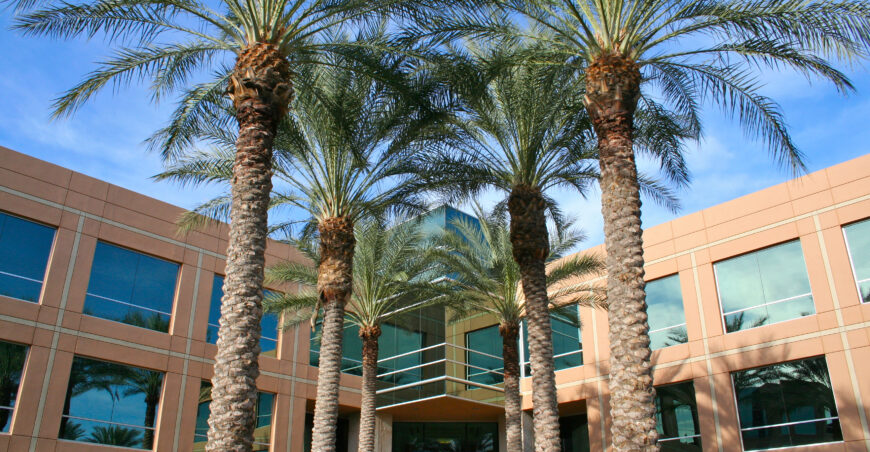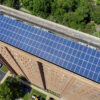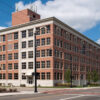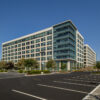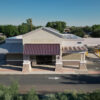Arizona’s commercial real estate sector, particularly medical real estate, is experiencing a surge unlike anything seen in recent years. Fueled by rapid population growth, increased healthcare needs, and a boom in demand for medical services, this sector has become a prime focus for investors and developers and is one of the state’s hottest markets. However, rising costs – whether in construction, materials, or operating expenses – are increasingly impacting budgets. While the potential for high returns remains, managing these growing costs has become a crucial component of success in the Arizona medical real estate market.
The Driving Factors Behind the Arizona Medical Real Estate Boom
Arizona has long been a desirable destination for those seeking retirement, a milder climate, and high-quality healthcare. Over the last decade, the state has seen its population soar, driven in part by the expansion of its healthcare sector. The growing number of retirees, combined with the state’s overall economic growth, has led to an increased demand for medical services, making medical real estate one of the most sought-after investment categories.
Particularly in cities like Phoenix, Scottsdale, and Tucson, the expansion of medical facilities – from large-scale hospitals to outpatient centers and specialty care clinics is reshaping Arizona’s commercial real estate landscape. Investors and developers are flocking to the market, eager to capitalize on the strong demand for healthcare services.
However, with that growth comes new challenges. Rising construction costs, labor shortages, and inflationary pressures have made developing medical real estate more expensive than ever. Navigating these challenges while still achieving strong returns requires strategic planning and careful budget management.
The Challenge of Rising Construction Costs
One of the most significant hurdles facing the Arizona medical real estate market is the rise in construction costs. Over the past few years, costs for materials such as steel, concrete, and lumber have skyrocketed. The pandemic only exacerbated these issues, with supply chain disruptions and labor shortages adding further pressure to the construction industry. In many cases, what developers budgeted for a project several years ago may now be underestimated.
This cost escalation has created a dilemma for developers: How do your complete projects on time and within budget while still delivering the high-quality, state-of-the-art medical facilities that healthcare providers and their patients expect?
Several strategies have emerged to manage these rising construction costs:
1. Strategic Procurement: Locking in prices for materials early in the project’s timeline helps developers avoid the volatility of rising costs over time.
2. Modular Construction: Developers are increasingly turning to modular construction techniques, where portions of a building are prefabricated off-site. This approach can help streamline construction timelines, reduce waste, and, in some cases, cut costs.
3. Utilizing Gray Shell Buildouts: A popular trend in Arizona medical real estate is offering gray shell spaces – essentially unfinished spaces that tenants can customize. This approach reduces the upfront development costs for landlords and gives healthcare tenants the flexibility to tailor the space to their specific needs.
4. Renovating Existing Spaces: Instead of developing new properties from the ground up, many investors are opting to renovate existing commercial spaces. By repurposing older buildings into modern medical facilities, they can reduce the costs associated with new construction while still delivering high-quality spaces.
Understanding the Market: Location Drives Costs
The submarkets within Arizona’s real estate landscape each come with their own cost considerations. In major urban areas like Phoenix and Scottsdale, land prices are at a premium, and competition for prime real estate is fierce. In contrast, some of Arizona’s outer regions or suburban markets offer more affordable land options but may come with different sets of challenges, including lower demand or less access to transportation infrastructure.
Developers need to weigh the potential return on investment in these submarkets carefully. For example, Phoenix and Scottsdale may come with higher upfront costs, but the demand for healthcare services and the potential for long-term profitability can make these investments worth the price. Meanwhile, more suburban areas may offer a lower cost of entry but could require a longer time to realize substantial returns.
Understanding the nuances of Arizona’s submarkets is key to making sound investment decisions in medical real estate.
Maximizing Returns: Strategies for Managing Budgets
For investors in Arizona medical real estate, the key to maximizing returns lies in smart budgeting and strategic cost management. As construction costs rise, so too must the focus on creating a realistic, well-thought-out financial plan that accounts for future uncertainties.
Some effective strategies include:
Structured Leases with Escalation Clauses: Ensuring that leases have built-in rent escalation clauses can help offset rising costs. Medical tenants are often willing to commit to longer leases, making them more predictable sources of revenue. The medical office space market is evolving rapidly as healthcare providers adapt to new demands and changing patient expectations when it comes to leasing.
Tax Incentives and Government Programs: Arizona offers several incentives for healthcare-related development. These programs can provide significant cost savings for developers willing to invest in the state’s healthcare infrastructure.
Sustainability and Efficiency: Investing in energy-efficient building designs and sustainable construction methods can lead to long-term savings. Healthcare facilities consume significant energy, so reducing operating costs through sustainable practices can make a substantial difference in a project’s profitability over time.
The Future of Arizona Medical Real Estate
Despite rising costs, the outlook for the Arizona medical real estate market remains positive. The state’s population is projected to continue growing, particularly in older demographics, meaning the demand for healthcare services will only increase. For investors and developers, this creates an opportunity for significant returns if they can effectively manage their budgets and navigate the complexities of the market.
By staying proactive, leveraging innovative construction techniques, and remaining attuned to healthcare trends, stakeholders in the Arizona medical real estate market can position themselves for success in this rapidly evolving sector. Rising costs are a challenge, but with careful planning, the returns can make it all worthwhile.
If you are interested in learning more about the commercial real estate market, feel free to reach out to us at ICRE Investment Team anytime. We’d be happy to help supply you with information on any relevant properties or markets, alongside any connections in lending, investing, brokerage service or consulting that you might need!


